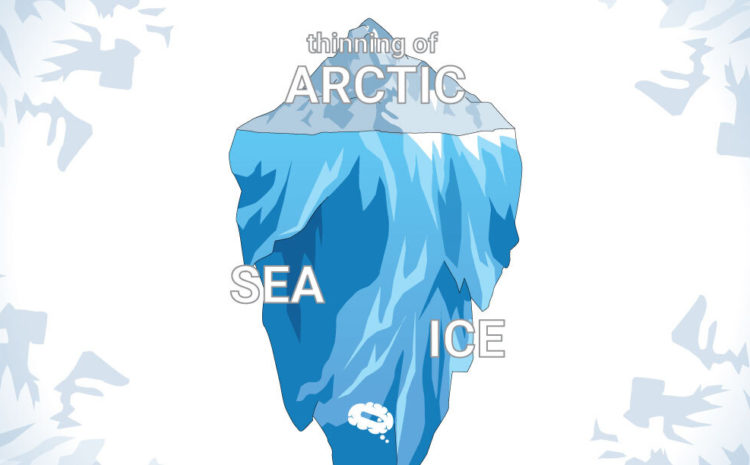The Arctic is thinning two times faster than expected.
An updated model suggests that the sea ice along the coasts of the Arctic is thinning two times faster than expected.
Nature is deteriorating with increasing global warming and climatic changes. As pole ice melts rapidly, it is causing a loss of biodiversity and raising concerns about sea levels as well.
Check out Mind the Graph Gallery for illustrations related to sea ice. Click on the image below!

The thickness of sea ice serves as a barometer to understand the state of the Arctic region. The thicker the ice, the more thermal insulation it acts as, preventing ocean surface temperatures from rising during winter and providing protection in summer from heat.
Arctic summer melt also is less likely to be sustained by thinner ice.
Hence, researchers have evaluated the results from a newly developed computer program intended to estimate the difference in snow depth annually and identified sea ice thinning accelerated much further than anticipated.
The study’s purpose and objectives
As sea ice cover moderates air-water exchange and heat transfer between the oceans and the atmosphere, it has implications for regional ecosystems, patterns of hemispheric winds, and global climate.
Thermal isolation is increased with thicker sea ice, so temperatures stay lower in winter.
It is also the thickness of sea ice during the accumulation of snow that determines the sea ice’s depth below the water surface, contributing substantially to the thermodynamic growth of the sea ice. The thickness of sea ice is therefore an important indicator of the region’s health.
The researchers used the CryoSat-2 satellite radar to measure sea ice thickness for this study.
The aim was to compare the data available from the old model with a new model that involved climate change.
The height of the ice above the water can be found by timing how long it takes for radar waves to reflect, resulting in an estimation of its thickness.
SnowModel-LG, a Lagrangian snow accumulation model, was used to predict the total snow depth and density at different locations around the Arctic Ocean by considering wind, temperature, precipitation, and ice motion analysis.
This was followed by combining the results of the snow model with data from satellite radar in order to estimate how rapidly sea ice thickness in the Arctic is decreasing, and how it may vary over time.

As a result:
A factor of 50 percent was added to the variability of sea ice thickness in the marginal seas by including the snow cover variability.
According to their study, fluctuation in snow cover contributes an increasing portion of the variability in the inferred thickness of sea ice, increasing from around 20% to more than 70% on a seasonal timescale.
SnowModel-LG data-driven trends were also observed in the sea ice thickness statistics, amplifying declines in areas where they already existed, and introducing substantial losses in locations that did not already have them.
Increasing carbon footprints are leading to diminishing ice sheets because humans have significantly increased the number of activities that affect the environment. Several species of animals in the polar regions have also lost habitat due to this melting. A holistic approach to evaluate sea ice thickness will be given through their integrated model, which bridges the gap of outdated systems of analysis and incorporates factors like climate change.
Their research is a significant milestone that can definitely contribute to the bigger picture to look at the real cause.
To know more about their research check out the reference mentioned below.
Robbie D. C. Mallett, Julienne C. Stroeve, Michel Tsamados, Jack C. Landy, Rosemary Willatt, Vishnu Nandan, Glen E. Liston. Faster decline and higher variability in the sea ice thickness of the marginal Arctic seas when accounting for dynamic snow cover. The Cryosphere, 2021; 15 (5): 2429 DOI: 10.5194/tc-15-2429-2021

Subscribe to our newsletter
Exclusive high quality content about effective visual
communication in science.




